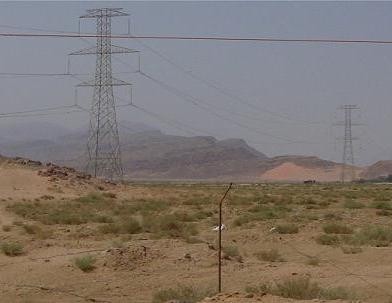Energy Sector
OVERVIEW
Jordan meets nearly all of its energy needs by importing oil and gas. Its energy sector faces rising global oil and gas prices, increased domestic demand, and a changing regional political environment that can no longer subsidize the country’s reliance on energy imports, which constitute nearly one-fifth of its gross domestic product (GDP). USAID promotes the practical and efficient use of national energy resources to encourage Jordanian energy producers, utilities and consumers to adopt best practices and develop alternative and renewable energy sources.

CHALLENGES
Longer-term initiatives, such as the increased use of renewable energy and the development of alternative energy supplies, will eventually help address the supply side of Jordan’s energy equation. However, in the near term, Jordan’s energy sector must also address demand through improved energy efficiency. To achieve this goal, it must overcome various challenges, including distorted tariffs, lack of capacity, and a dearth of reliable data to support effective decision making.
The Jordanian government stands to benefit significantly by implementing its National Energy Strategy, which calls for $13.6 to $17.8 billion in capital investments between 2007 and 2020, including oil shale exploration, nuclear electricity generation, and the expansion of its transmission and distribution grid. Jordan’s potential for generating energy through solar and wind resources is largely untapped, requiring private-sector investment.
CURRENT PROGRAMS
USAID’s Energy Sector Capacity Building project applies a broad, adaptable approach to meet the energy sector's evolving needs. In coordination with other ongoing USAID activities, it pursues:

- Successful development and adoption of a utilities incentive mechanism to promote energy efficiency, including a robust monitoring, evaluation, and validation system;
- Increased institutional capacity of Jordanian energy sector partners, including the Ministry of Energy and Mineral Resources, Electricity Regulatory Commission, and electricity production, distribution, and transmission companies;
- Strengthened presence, capacity and regulation of energy services companies through market research, business development services, accreditation of such companies, and the creation of an energy services association; and
- A flexible response mechanism for emergent energy sector needs and opportunities on a demand-driven basis.
IMPACT & RECENT ACHIEVEMENTS
Recent USAID-supported achievements include:

- Developed a framework that allows electrical distribution companies to implement energy efficiency programs targeting highly subsidized residential consumers;
- Supported the Government of Jordan in the negotiation of two Gas Sales and Purchase Agreements with gas developers in the East Mediterranean Sea;
- Assisted Greater Amman Municipality in preparing tender documents, including an evaluation plan to create electricity from solid waste;
- Launched a mentorship program for young women in the energy sector to enhance the professional development of women and support their integration into leadership positions;
- Supported the pre-certification of Jordan’s first Gold Level Leadership in Energy and Environmental Design (LEED) building, promoting a more green-conscious building industry;
- Conducted 15 U.S./Jordanian capacity-building and institutional reform exchanges involving 132 Jordanians and 88 Americans. One exchange supported the Electricity Regulatory Commission’s new incentive-based approach to regulation, including a new working group to revise the regulatory structure with representation from the utilities;
- Assessed the economic viability of green buildings in Jordan through a national competition and engaged 100 Jordanian engineering students working in teams with faculty to submit innovative energy/water-saving designs for green buildings;
- Established a Jordan Energy Chapter that partnered with the American Energy Engineers Association, which in turn trained 50 Jordanian engineers as certified energy managers;
- Developed a social marketing campaign to promote improved energy use practices after conducting baseline assessments of knowledge, attitudes and behaviors about energy and environment among youth and households. Also surveyed large energy consumers and documented public information and the social marketing efforts of non-governmental and community-based organizations;
- Supported the establishment of a Clean Tech Innovation Cluster, including the development of a clean technology incubator, capital network, and research and development center;
- Created outreach materials and events for children with energy efficiency messages, and created a world-class energy exhibit at the Jordan Children’s Museum; and
- Engaged with public regulatory bodies and private service providers to forge partnerships for sector development and promote energy efficiency and conservation.








Comment
Make a general inquiry or suggest an improvement.